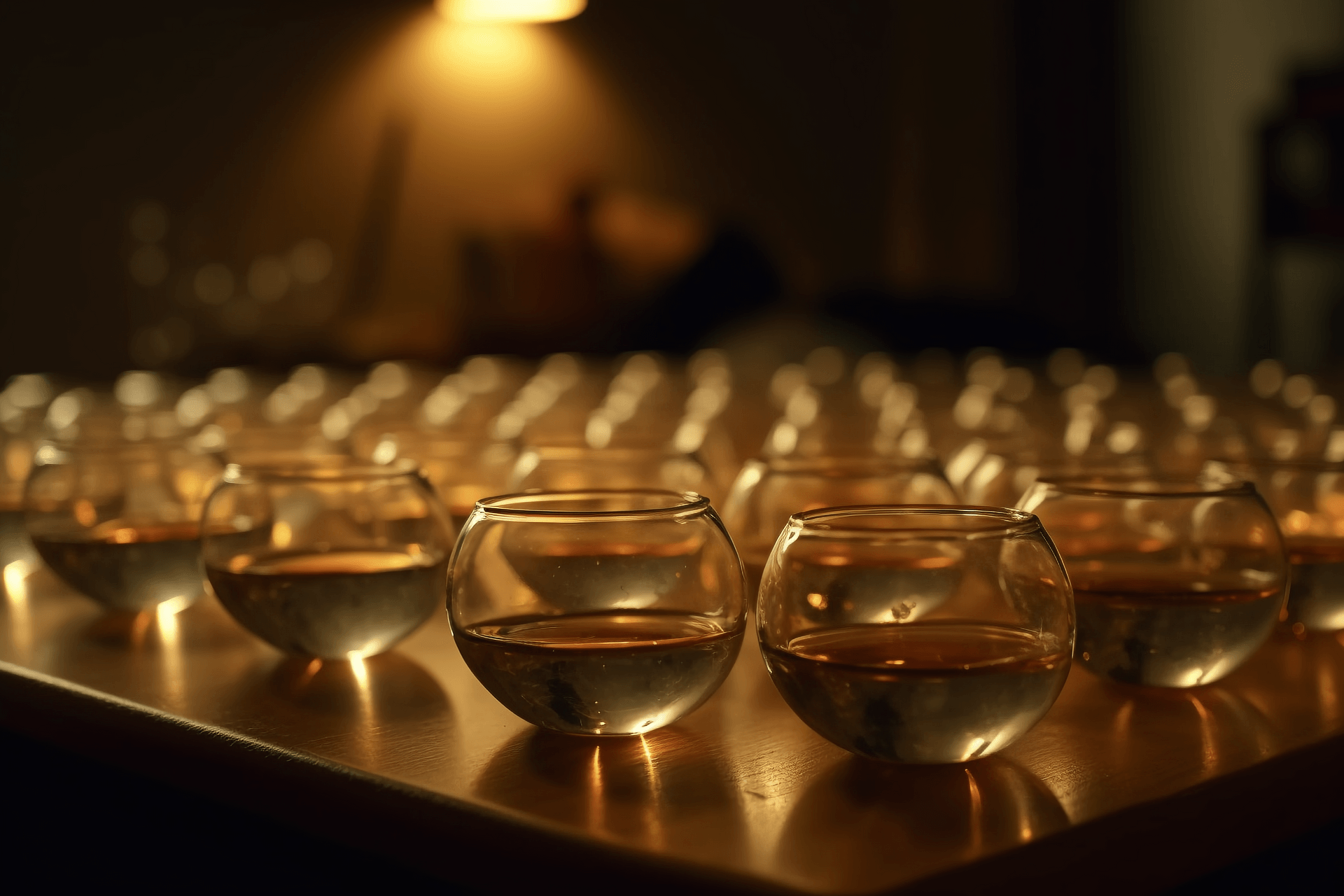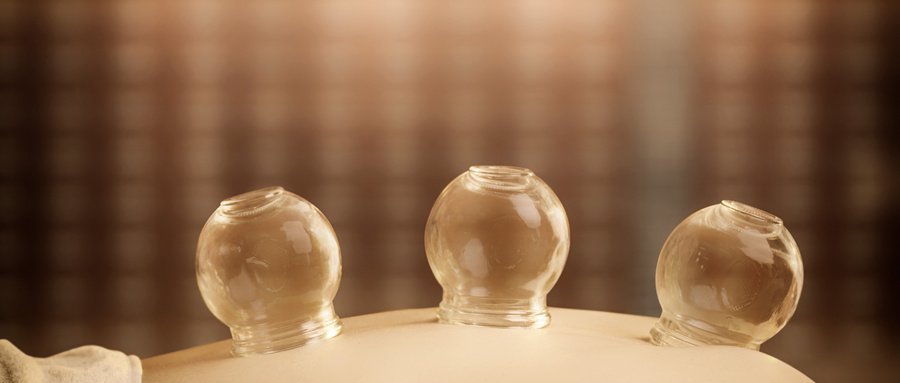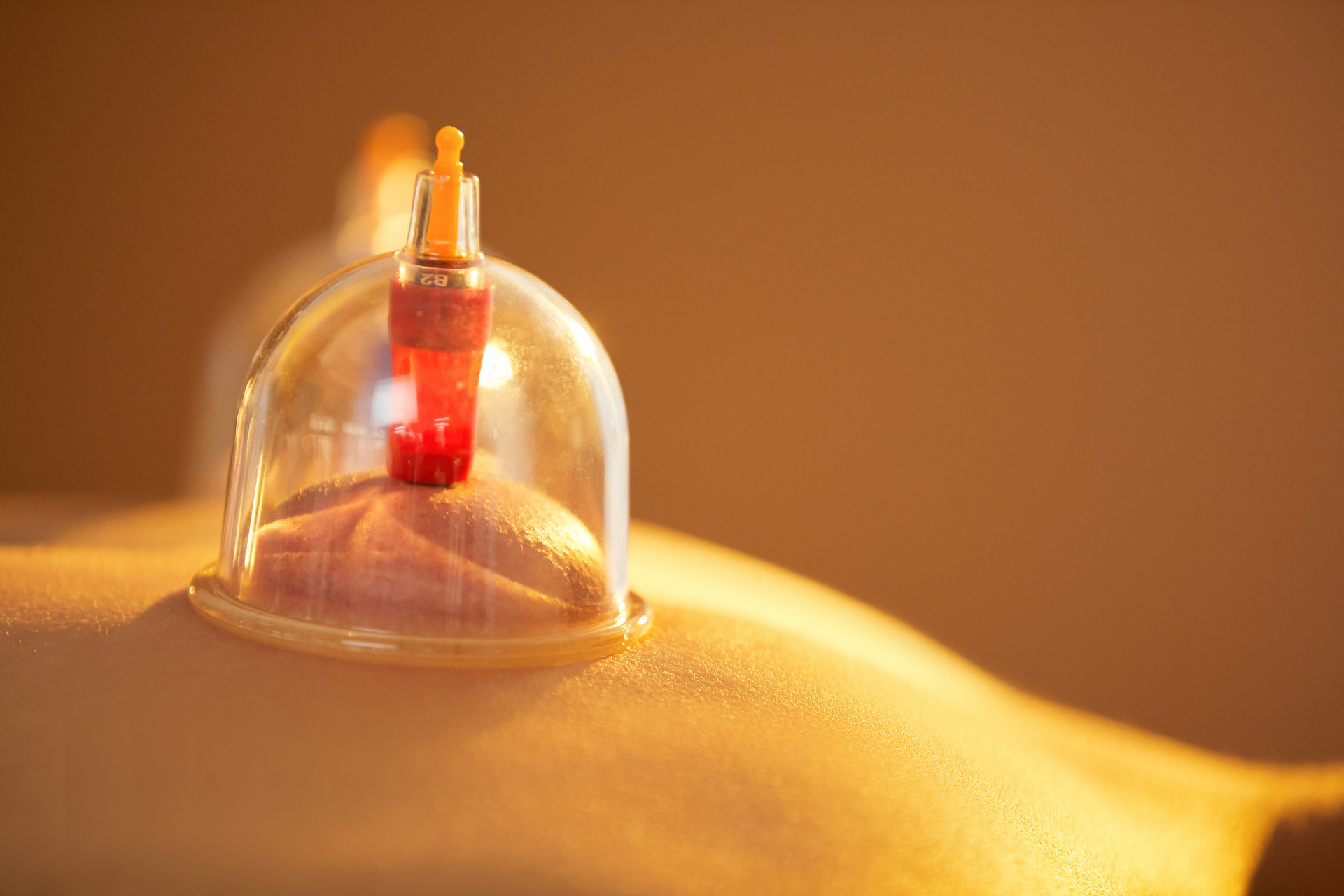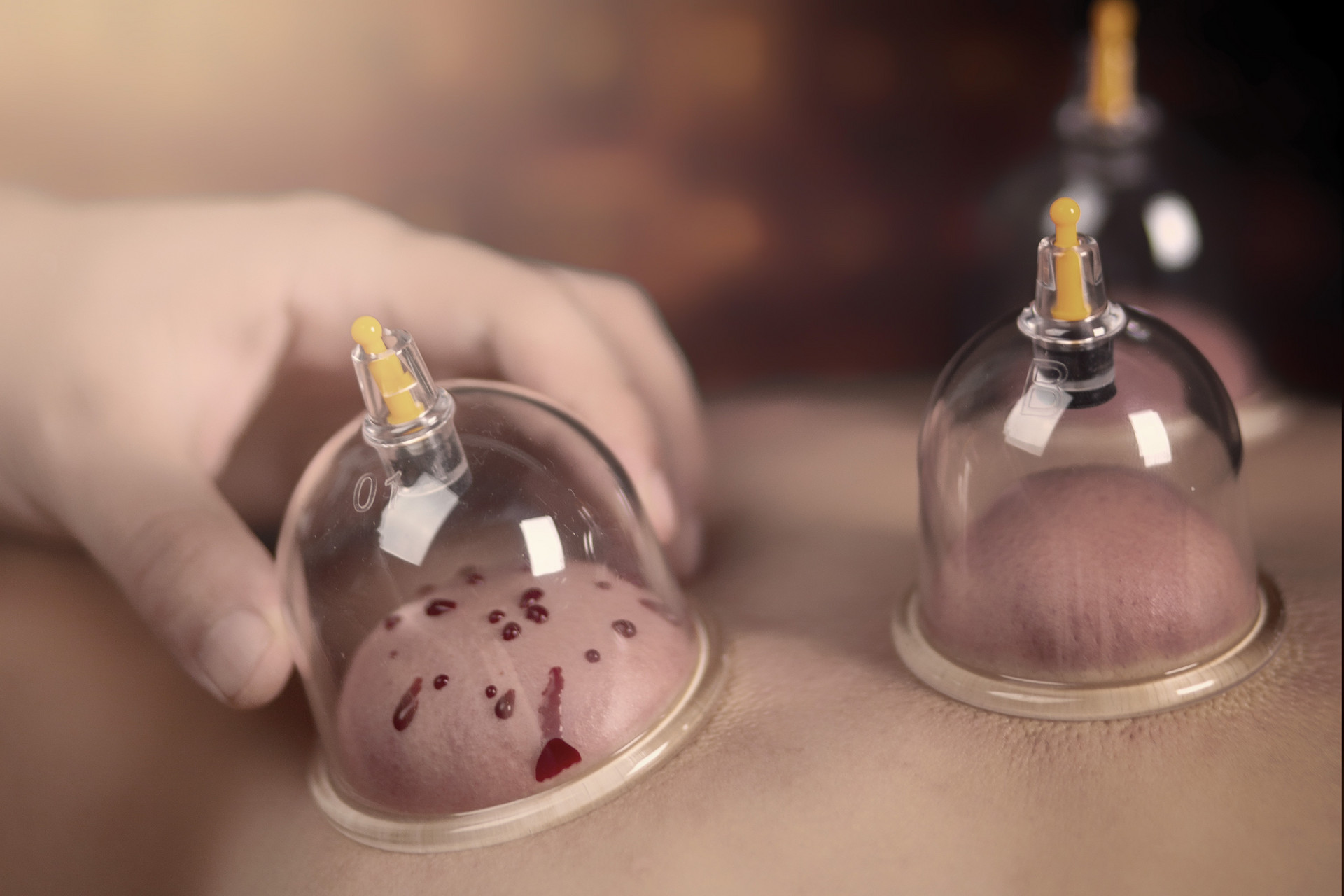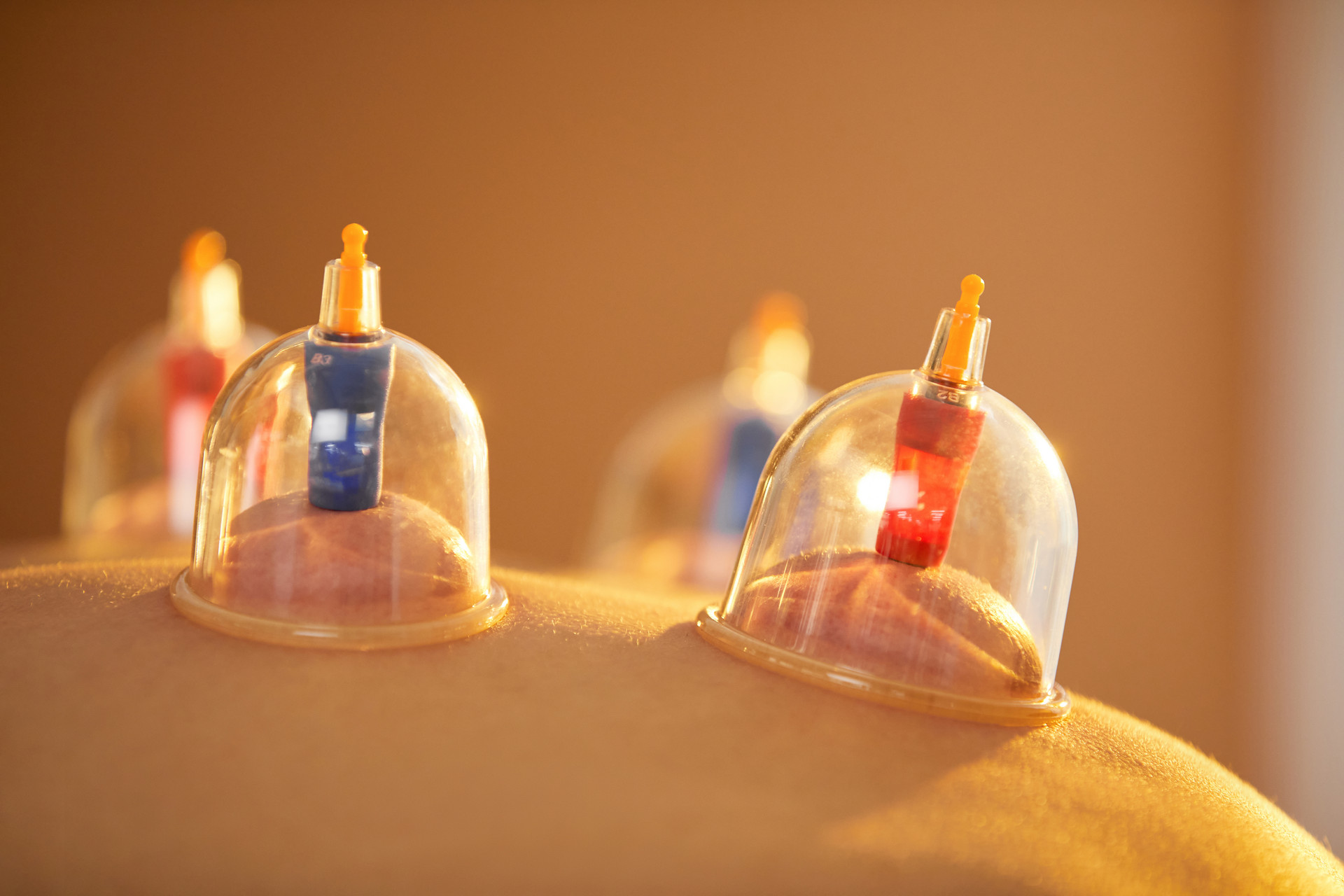1. Normal Reaction
Regardless of the method used to attach the cup to the body surface, due to the negative pressure suction effect of the cup, the local soft tissues may swell above the level of the cup mouth, and the patient may feel a pulling and swelling sensation, or feel heat, warmth, coolness, and a sense of comfort in the area. Some patients may experience immediate or gradual relief of symptoms, or even complete elimination. Of course, not all of the above sensations will occur, and the extent of their occurrence will vary depending on individual reactions. After leaving the cup for a certain period of time (several minutes to more than ten minutes), or after flashing or walking the cup multiple times, the local soft tissues may appear red or purplish-red (bruise-like color), or red spots (small, purplish-red rash). These changes in the skin may last from one to several days. All of these are considered therapeutic effects of cupping therapy.
Both traditional Chinese medicine and Western medicine can diagnose and assist in diagnosing diseases based on the local reactions. Traditional Chinese medicine believes that the presence of blisters, edema, or excessive moisture in the cupping area indicates the presence of dampness in the body. Deep red, dark purple, or purplish-red color with slight tenderness and accompanied by body heat suggests the presence of heat-toxin syndrome. If there is no body heat, it suggests the presence of blood stasis syndrome. If the skin color remains unchanged and feels not warm to the touch, it suggests the presence of deficiency-cold syndrome. If there is itching or the appearance of skin lines, it suggests the presence of wind syndrome. The fluid extracted during bloodletting cupping therapy can also indicate different disease conditions. Generally speaking, fresh blood indicates a milder condition, black blood or blood clots indicate a heavier stasis, yellowish fluid indicates damp-heat syndrome, and clear fluid indicates cold-damp syndrome. Blood and water often appear at the beginning of treatment or during the recovery stage of a disease. The amount of bleeding can also indicate the severity and outcome of the disease. Some patients may have little or no bleeding at the beginning of treatment, which indicates severe blood stasis or excessive wind. As the number of treatments increases, the blood stasis is gradually removed and the bleeding gradually increases. However, as the condition improves, the bleeding will gradually decrease until no bleeding occurs. Western medicine believes that if there is slight bleeding in the cupping area, it can be used as one of the basis for diagnosing eruptive diseases (such as measles, rubella, scarlet fever, spotted fever, etc.), because capillary damage occurs in the pre-eruption stage of these diseases. If there are imprint marks with overlapping purple spots, it indicates a positive reaction to spotted fever. This reaction appears an average of 2 days earlier than deformable bacteria microorganism agglutination reaction or Rickettsia agglutination reaction, and the positive rate is high. If there are many large blisters, it indicates fluid retention and edema that is not easily observed by the naked eye. If there are pink or colorless spots, it suggests neuralgia or hypertension. If there are deep purple spots and blackish-brown streaks in the purplish-red marks, it suggests myofascial rheumatism and rheumatoid arthritis. If these marks or streaks gradually decrease during the treatment process, it indicates a reduction in symptoms, improvement, or recovery of the disease.
2. Abnormal Reaction
If the patient feels extremely tense, unbearable pain, and develops blisters within a few minutes (which may indicate dampness in the body), or feels coolness, numbness, and pain in the distal area of the treated area, it is considered an abnormal reaction. The possible causes of abnormal reactions are as follows:
(1) Excessive psychological reaction of the patient.
(2) Excessive suction force of the cup.
(3) Mistake or burn of the skin during the procedure, or pre-existing skin wounds.
(4) Strong irritation from the applied medication.
(5) The edge of the cup is too thin (for cupping) or not smooth, with sandy-like protrusions or grooves, or the patient's skin is dry and loose (such as in elderly people), and the practitioner may rotate the wrist (rotating the cup), causing wrinkles in the skin.
(6) The cupping time is too long, causing excessive blood stasis and obvious swelling.
(7) There are superficial large arteries in the cupping area (such as the abdominal groove artery, the dorsal artery pulsation site), and the local soft tissues are tense due to the suction force, causing the arteries to be compressed and affecting blood flow, resulting in ischemia in the distal tissues, leading to numbness, coldness, and pain reactions, and even tissue necrosis.
Fainting during cupping refers to the symptoms of dizziness, palpitations, nausea, vomiting, cold sweats, and even syncope that occur in patients during the cupping process. The causes of fainting during cupping include weakness, hunger, fatigue, mental stress, or placing the cup in forbidden areas. Generally speaking, fainting caused solely by cupping is extremely rare and only occurs occasionally during needle cupping or pricking cupping.
3. Prevention and Treatment of Abnormal Reactions
The preventive and treatment measures for abnormal reactions are as follows:
(1) Carefully inspect the cups and discard those that do not meet the requirements.
| 1 2 > >> >>|


